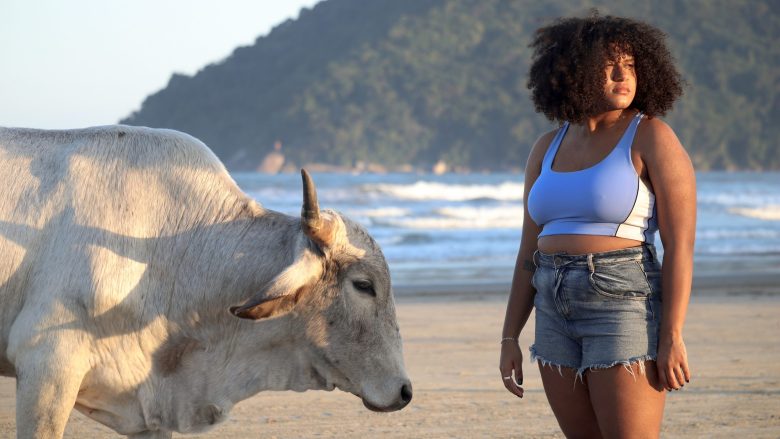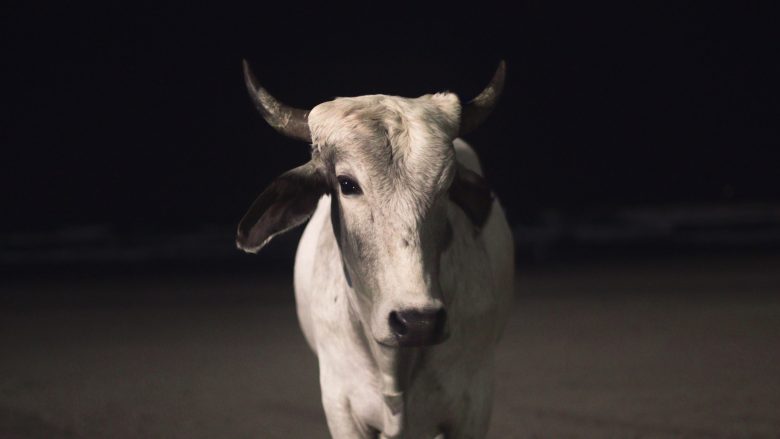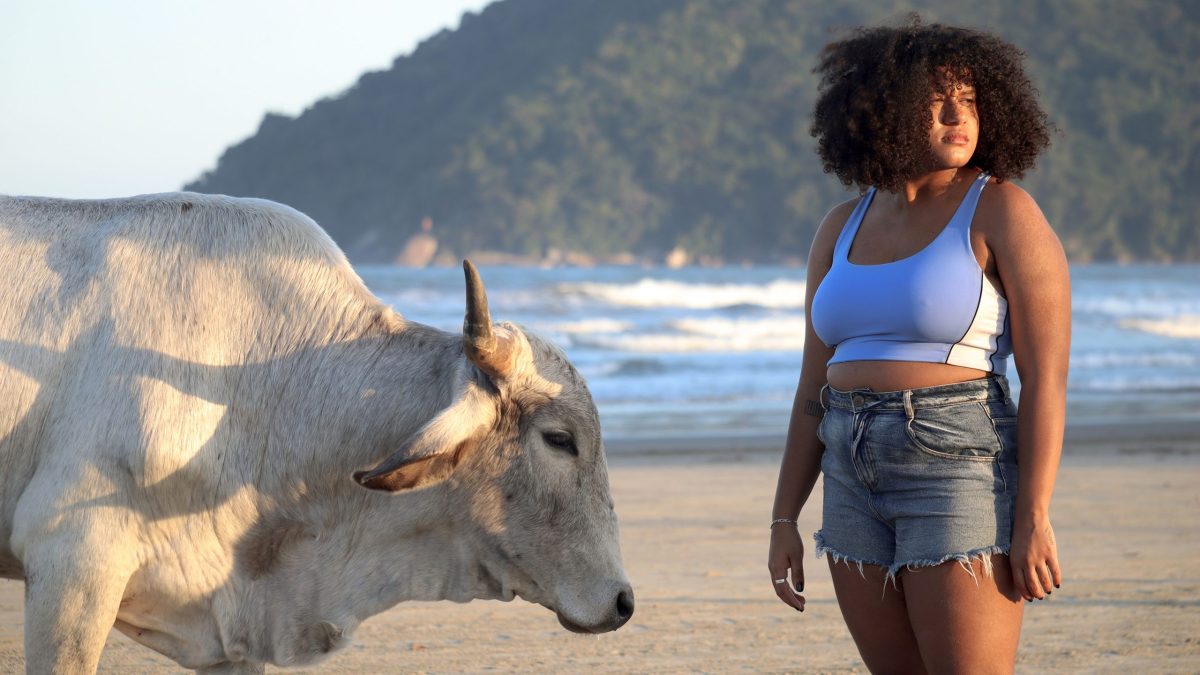
Daniel Barosa is honored that his narrative short film, “Boi de Conchas (The Shell Covered Ox),” will premiere at the 2024 Sundance Film Festival.
“I’m super happy, because the film will get a showcase where people can watch it,” he said. “The main focus, especially for short films, is to get people to see the work and see if it resonates with them. (And the) main goal (as filmmakers is) to tell people about your ideas through your art. And there is no better place to do it than at a film festival like Sundance.”
“Boi de Conchas” is about a bass player named Rayane, portrayed by Bebé Salvego, who, while preparing for her school’s music festival in Brazil, mourns the loss of her sister.
The catch is she has to avoid turning into an ox, which is an unfortunate phenomenon that happens to several teenagers in the area.
The idea for the 15-minute film, which will screen in Portuguese with English Subtitles, started out more related to the fable and the folklore of the region near the coast of Sao Paulo, Brazil, Barosa said.
“It’s like an interesting fable that is also about running away from certain fates,” he said. “The story goes that this ox runs away from its owner to escape the slaughterhouse and winds up in the sea. And they say you can see the ox all shiny and covered in seashells walking on the beach at night under the moonlight.”
As Barosa began piecing his film’s story together, he came up with a unique angle.
“I mixed the folklore with a coming-of-age theme and teen angst, and this is what I came up with,” he said. “Everyone grieves in their own way. And the film is basically about mourning.”
“Boi de Conchas” grew while Barosa talked with his cast and crew.
“They all had their own tidbits they wanted to add to the story,” he said. “The story was written during COVID, so there was a moment when a lot of people lost loved ones and friends. So there was that from the get-go.”
The initial screenplay’s storyline went into different directions, but Barosa worked with Salvego to give it more focus.
“Through Bebé, we really saw that everything has to revolve around the missing sister,” he said. “So the film became about Rayane’s journey and how their parents see the world around her. And what they see is everything is related to death.”
From the start, Barosa knew he wanted a musician to play Rayane.
“Actors and actresses can always learn to play the instrument, but that takes time,” he said. “So, we searched for musicians for the role and I found Bebé. She’s a multi-talented artist and super young as well. I’m glad to work with her now at the beginning of her career, because she’s going to skyrocket into a pop superstar. And I won’t be able to work with her anymore.”
There are other musicians in the film, including Kaique Martins De Paula, a rising singer in Brazil.
“He plays a character named Mario who does a Zoom jam with Rayane,” Barosa said. “And they both have such strong presences on the stage and in music videos.”
For the rest of the cast, Barosa recruited local residents.
“We worked with a lot of people from Bertioga,” he said. “It’s a small town, so there aren’t any professional actors. But you do have community theater, amateur actors and people who are interested in it. And it was the first time for most of them to do a film.”

While the screenplay included written dialogue, Barosa and the cast took a more improvisational route for the shoot.
“The dialogues worked more like guidelines,” he said. “We would rehearse, and then when we would shoot, the actors would say the lines in their own words,” he said. “We also would film one scene in many different ways, and the editor (Aron Matschulat Aguiar) would have the not-so-easy task of building something cohesive from these different moments.”
This method gives the film a documentary-esque feel.
“The actors were really being themselves in this fantastical world and context,” Barosa said.
The fantasy element arrives via a live ox, according to the filmmaker.
“There’s actually a beach nearby that does have live oxen roaming around,” he said with a laugh. “When our location scouts came in, the locals told them they could film some ox there. But you know how film works, it takes time to get the crew together and plan the shoot. So if there’s no ox at the time you want to shoot, you can’t just say, ‘We’ll come back tomorrow.'”
Barosa also hired an animal wrangler who works in the Brazilian film industry.
“We worked with an ox named Mimosa, and this was its first film as well,” he said. “But he was super calm. We had the wrangler and veterinarian on set that helped things go smoothly, as well.”
During the first few days of the shoot, the wrangler kept a rope around Mimosa, Barosa said.
“One day we decided to take off the rope to see what the ox would do,” he said. “It just started to walk away, like in the folklore. So we had to keep the rope on it and eliminate the rope and other things in post production.”
Barosa and the cast shot the film in May 2023.
“We had a couple of days at the seaside of Bertioga, Brazil, and we did some extra shots later on in early June in ’04 for other scenes,” he said. “It was kind of chaotic, because I moved with my wife and daughter to the United States in August. It was a big move, and I was in post production.”

Barosa remembers many early mornings talking with his cast in Sao Paulo, while he was in California.
“I was up at 2 or 3 a.m., and every bit of free time I had I was working on the film,” he said. “The rest of my life was focused on the move and everything else.”
The lack of sleep was worth every second, Barosa said.
“It was great, because now I get to premiere at a great festival, and we’re here in the country as well,” he said. “So we can come to Park City and enjoy the festival and be a part of it.”
Barosa wants to expand “Boi de Conchas (The Shell Covered Ox)” into a full feature film.
“We initially wanted to make a feature, but for financial reasons, we made it into a short,” he said. “So this is like a proof of concept, and we want as many people as possible to watch it.”

